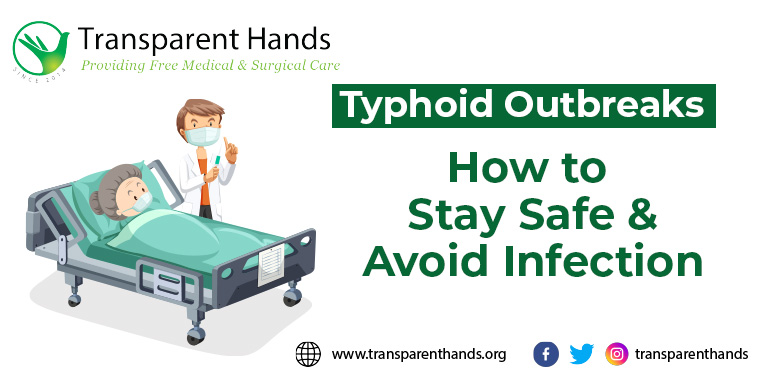Typhoid Outbreaks – How to Stay Safe and Avoid Infection?

What is Typhoid Fever?
Typhoid fever is a bacterial infection caused by the bacteria Salmonella enterica serotype Typhi. It is transmitted through contaminated food and water, as well as through close contact with an infected person. Typhoid outbreaks are more prevalent in areas with poor sanitation and hygiene, and in regions of the world with limited access to clean water.
High fever, headache, tiredness, weakness, stomach pain, constipation or diarrhea, and a rash of flat, rose-colored spots are common signs of typhoid fever. If left untreated, typhoid fever can result in life-threatening complications such as intestinal bleeding or perforation.
Common Causes of Typhoid Fever Include:
1. Food or water contaminated with the bacterium: Typhoid fever is frequently transmitted through contaminated food or water, especially in areas with poor sanitation and hygiene. The bacterium can survive in water or dried sewage for weeks, and it is frequently transmitted via the fecal-oral route, which means it is passed from an infected person’s feces to another person’s mouth.
2. Poor sanitation: Lack of access to clean water and proper sanitation can increase the risk of typhoid fever transmission.
3. Close contact with infected people: Typhoid fever can be transmitted from person to person through direct contact with an infected person or through indirect contact with contaminated objects.
Symptoms of Typhoid Fever
Typhoid fever symptoms can vary in severity and resemble those of other illnesses, making it difficult to diagnose without medical testing. Common symptoms of typhoid fever include:
- High fever, which can gradually increase over several days, reaching up to 103–104 degrees Fahrenheit (39–40 degrees Celsius).
- Headache and muscle aches.
- Weakness, fatigue, and general malaise.
- Abdominal pain and discomfort, which may be accompanied by constipation or diarrhea.
- Rash of flat, rose-colored spots.
- Loss of appetite and weight loss.
- Dry cough.
- Enlarged liver and spleen.
Symptoms can appear gradually over several days to several weeks after bacterial exposure, and they can last for several weeks if the infection is not treated. Typhoid fever can be fatal in severe cases, causing intestinal bleeding, perforation of the intestine, or inflammation of the heart or brain.
Typhoid Preventions & Precautions
1. Vaccination
Getting vaccinated against typhoid fever is the most effective way to prevent typhoid outbreaks. Two types of vaccines are available: the injectable vaccine, which lasts for two years, and the oral vaccine, which lasts for five years. These vaccines are recommended for people who are traveling to areas where the disease is common, or who are at high risk of exposure.
2. Good hygiene practices
Practicing good hygiene can help prevent the spread of typhoid fever. This includes washing hands regularly with soap and water, especially before eating or handling food, and after using the bathroom. It is also important to avoid sharing utensils, glasses, and other personal items with others.
3. Safe food and water
Typhoid fever is often spread through contaminated food and water. Therefore, it is important to drink only safe, clean water and to avoid eating raw or undercooked food, especially meat, and seafood.
4. Sanitation
Proper sanitation and hygiene are critical to preventing typhoid outbreaks. This includes maintaining clean water sources, proper sewage disposal, and good hygiene practices in the kitchen and bathroom.
5. Travel precautions
If you are traveling to an area where typhoid fever is common, take extra precautions to prevent the disease. This includes avoiding street food, drinking bottled or boiled water, and washing fruits and vegetables with clean water before eating.
Reasons to Address Typhoid Outbreaks
1. Public health
Typhoid fever is a serious public health concern, and outbreaks can have serious consequences for communities, particularly in areas with limited access to healthcare. Addressing outbreaks can help prevent the spread of the disease and minimize its impact on public health.
2. Economic impacts
Typhoid outbreaks can also have a financial impact on communities, such as lost productivity and higher healthcare costs. These economic consequences can be reduced by responding to outbreaks quickly and effectively.
3. Global health security
Typhoid fever is a global health security concern because outbreaks can occur anywhere in the world and spread quickly across borders. Responding to outbreaks quickly and effectively can help prevent the spread of disease and reduce the risk of a global pandemic.
Endnote
If you follow the typhoid preventions, then you can help protect yourself and your community against typhoid outbreaks effectively.










Leave Your Comments